Space plants 30cm apart in all directions.
10cm apart in containers.
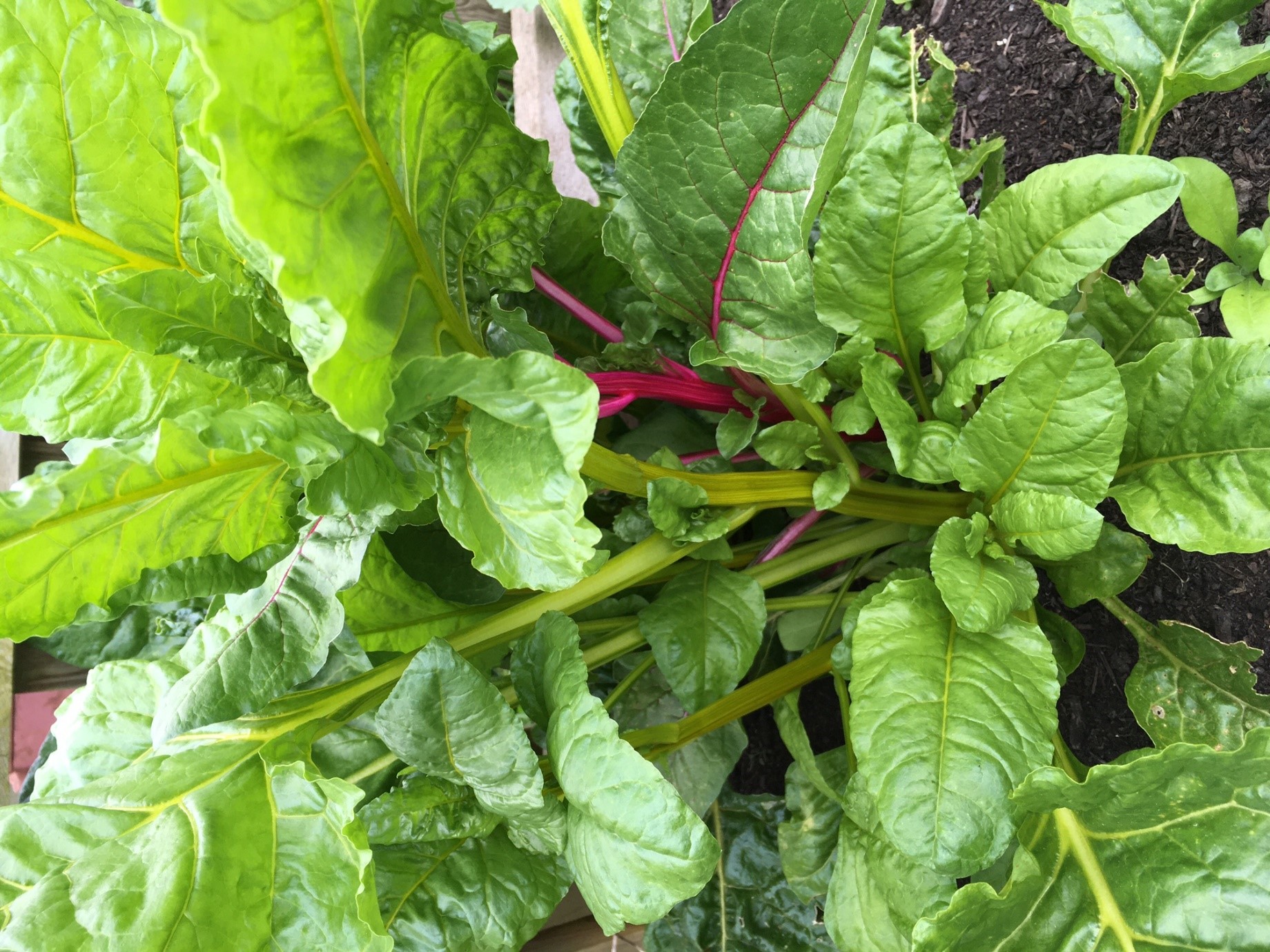
Chard is a rewarding crop to grow – bright and sturdy. It looks good in any situation: containers, raised beds, borders and the veg garden.
Baby leaves are good in salads; stalks and fully formed leaves cook well as a vegetable.
Soil Preparation
Grow chard on land that has not had cabbage, Brussel sprouts or other brassicas for at least 3 years.
Dig plenty of farmyard manure or garden compost into the ground. Work the soil so that it is fine and crumbly. Level it off and firm it down.
Plant Out
Chard is ready to plant out when the plants are 5-10cm tall and have at least four true leaves. The tiny cotyledons, seed leaves, don’t count.
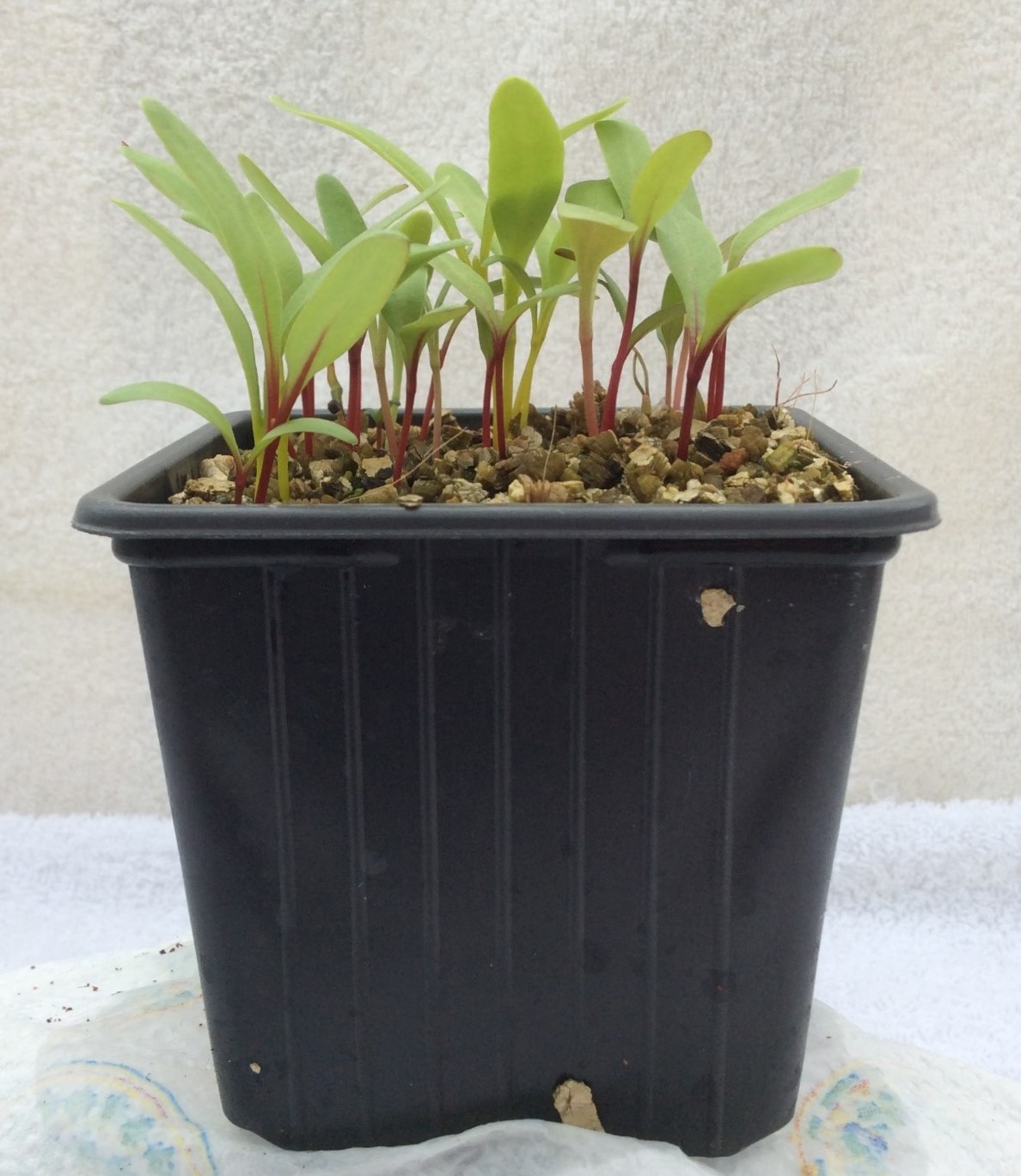
If they are on the small side, and to give them a head start, repot the seedlings from the pot into a 9cm pot, three plants per pot. The chard will grow on until it is strong enough to plant them outside.
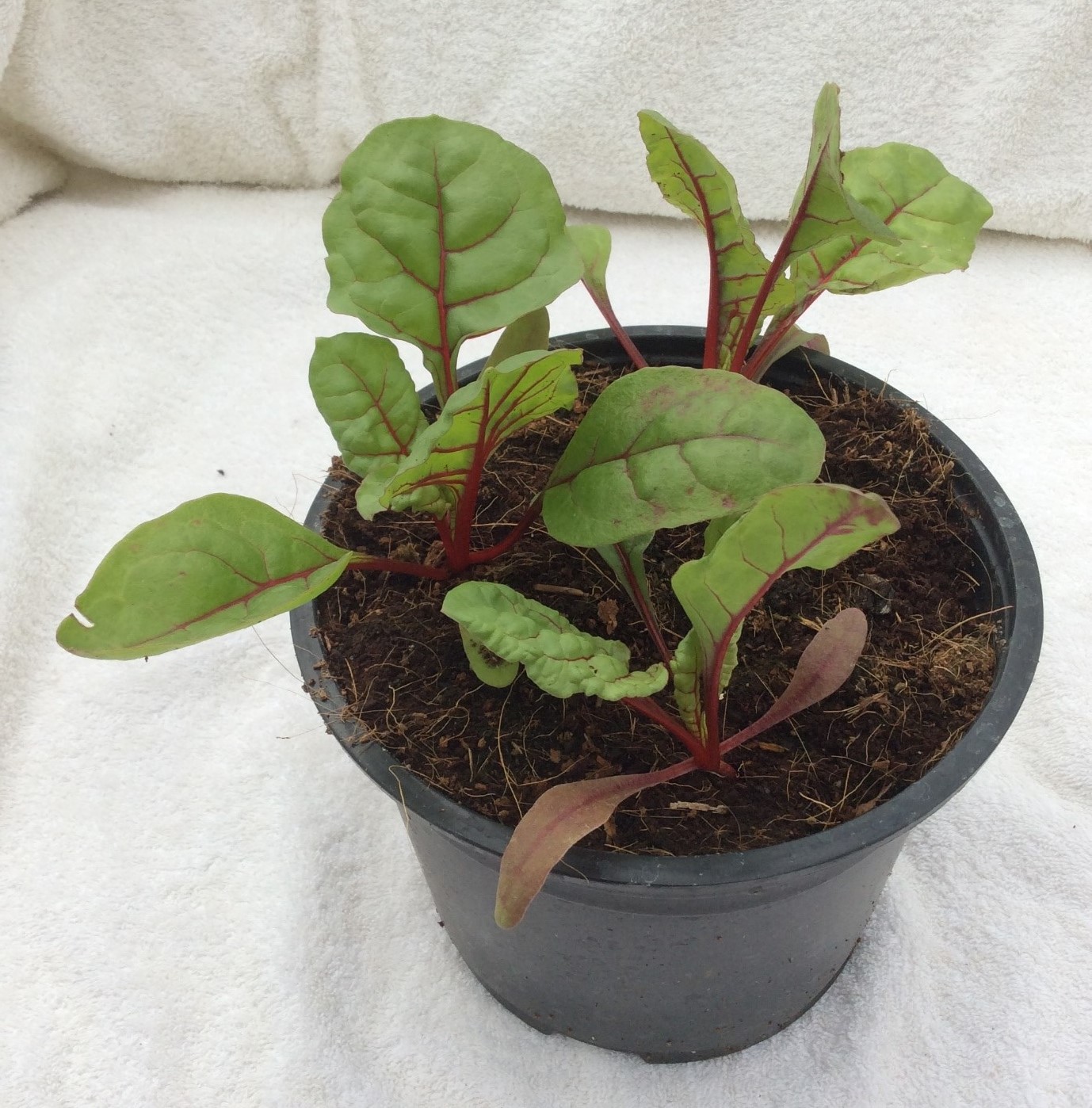
Harden the plants off by putting the pot outside during the day and bringing it in at night for a week. This will help to get them acclimatised to the conditions outdoors.
Soak the pot of plants with water the night before planting out.
Take the plants out of the pot by placing a hand over the plants and tipping the pot upside down. The soil ball will fall out of the pot into your hand.
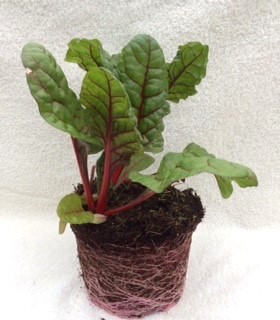
Turn the ball the right way up & gently tease the roots apart to separate out one plant. Take great care not to disturb the roots.
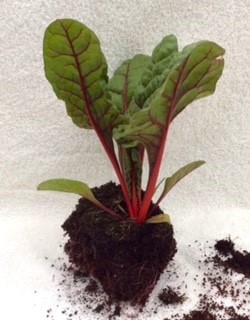
Make a hole in the ground that is slightly deeper than the roots are long. Place the plant in the hole so that the bottom leaves are almost at soil level. Gently push the soil around the roots to fill in the hole.
Hold the leaves to keep the plant vertical whilst firming the soil down. Then firm again, as chard likes it firm!
Water
When all the plants are in, water them well. Keep the soil damp for a week or so, until the plants look well established.
Containers must be kept moist all through the summer. Pay particular attention to the edges of the container which will dry out first.
Weeds Pull weeds out as they appear. This will remove any competition for water and nutrients.
Fertilise with nitrogen fertiliser when the plant is about 20cm high.
Protect the plants with fleece or cloches in autumn and winter. This will enable the plant to keep producing new leaves. Otherwise, if left in the open, new leaves are unlikely to grow, although the plant will survive the winter, and produce fresh leaves in the spring.
Remove any yellowing leaves on the outside of the plant to the compost heap. Decaying leaves at the base of the plant attract disease.
Harvest
Start to use the leaves when the plants are about 20cm high. Cut the outer leaves first with scissors leaving about 4cm of stalk on the plant. There is no need to harvest them all at once. Chard is a true ‘cut and come again’ veg. Take care not to damage the growing centre, and the leaves will keep growing. Pick regularly to encourage more young leaves to grow.
Use the leaves as soon as they are cut because they soon wilt.
Harvest chard from summer to late autumn but some varieties will over-winter for an early spring crop. Grow different varieties to spread the harvest. To ensure a constant supply of chard, stagger plantings over a few weeks.
Mon - Fri 8:00am - 5:00pm
Sat & Sun 9:00am - 5:00pm
Any questions? Email us or give us a call on 01904 400092.